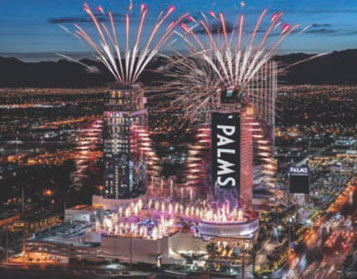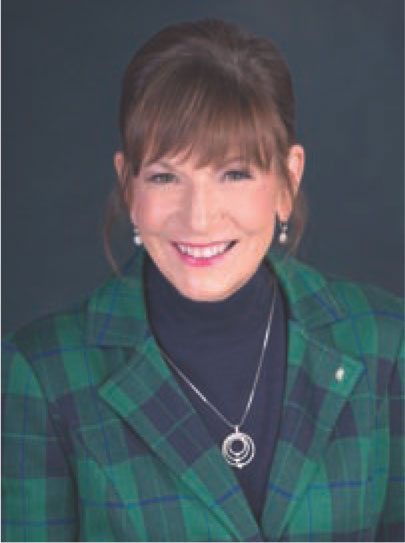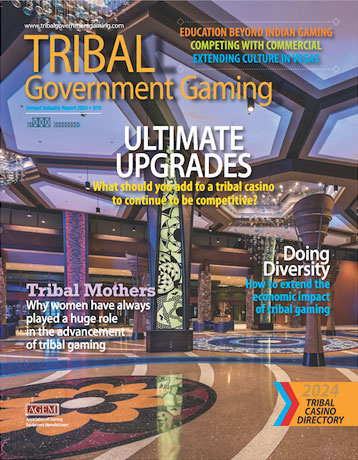
Along the Las Vegas Strip, the epicenter of the commercial gaming industry, the race was won long ago. During the last fiscal year, non-gaming amenities on the Strip accounted for more than 73 percent of all operator revenues.
But what about Indian Country?
As the tribal gaming market has matured, amenities outside of the slots and tables have evolved, particularly in the larger properties such as Pechanga in California and Mohegan Sun in Connecticut. And while smaller, more local Indian casinos—and many of the larger ones as well—still rely on the gaming piece as their main driver, as competition continues to increase, more and more tribes are beginning to look outside of the gaming floor to distinguish themselves.
That means non-gaming amenities in general are on the rise in Indian Country, although how they fit into the revenue picture still depends on the nature of the property and the size, demographics and spending habits of each particular market.
“Each property is a little different,” comments Paul Heretakis, vice president of Westar Architectural Group. “Some are in unique locations and have a captured audience for a large visitor radius with little competition. They need to offer a clean, safe, friendly environment with some amenities that can be used from time to time for marketing purposes.
“People in those areas prefer to eat at home and spend money on gambling. Amenities are a harder sell. Other properties are in very competitive markets, and those casinos have responded with amenities and properties that rival the Las Vegas Strip. They are enormous, make insane amounts of money and the level of design is first class.”
David Nejelski, creative director and principal of TBE Architects, says his firm—a firm that has 123 Native American and First Nation casino projects to its credit—recommends that clients do a prior market study to gauge the proportion and nature of non-gaming amenities to include.
“If it’s the only game in town and people are going there, the demand and the need to do secondary amenities isn’t as strong,” Nejelski says. “If you’re in a competitive market and you’ve got the property down the street that just did a hotel expansion, or added some conference space, then you’re going to start losing market share if you don’t start offering similar amenities, or something a little bit different.”
“If you look in a market like Southern California,” adds Brett K. Ewing, principal of Cuningham Architecture, “there are a lot of very nice facilities, and they’re pretty close to each other. Some are within 10 miles of each other. So, in that case, you have to keep up with the Joneses. You need to continue to redefine yourself to not only keep your existing customers, but grow the market share.”
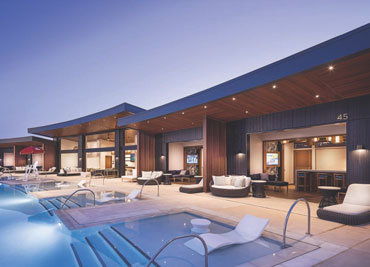
WinStar World Casino & Resort in Oklahoma by HBG Design
“Non-gaming amenities are key in reinforcing overall revenues for both tribal and commercial properties, recognizing the importance of keeping loyal gamers and guests engaged on-site,” says Nathan Peak, principal and practice leader for HBG Design. “The market is the main factor. HBG collaborates with our tribal clients and their feasibility consultants to identify and tailor non-gaming amenities to the local market and customer in alignment with our client’s specific revenue objectives.”
Returning on Investment
The market for non-gaming amenities grows as markets mature and long-operating properties continue to evolve.
“There’s a lot happening right now,” comments John Ruiz, principal and managing member of R2Architects. “We’re just starting to see where the non-gaming amenities of these properties are evolving today, in contrast to 15 or 20 years ago. And what we see is that there’s demand from the customers at a lot of these properties for what we’ve referred to as a more end-to-end experience.”
The goal of the architect’s plan, of course, is to provide tribal clients the non-gaming amenities that will provide the highest return on investment. These days, when it comes to non-gaming ROI, the discussion invariably turns to two areas—food and beverage, and, fast becoming a necessity, multi-use entertainment/business venues.
On the F&B side, the general demise of buffets after the Covid-19 crisis opened those large former buffet spaces to new ideas—notably, the food hall. This is an evolution of what first appeared as grab-and-go food courts, with several fast-food restaurants surrounding a cluster of tables. With the food hall, the cuisine choices are of a much higher quality than your typical fast food, and the space is much larger. Guests buy their food and relax in a comfortable dining area.

Tulalip Tribes’ Quil Ceda Creek food hall by TBE Architects
TBE Architects recently completed a food hall for the Tulalip Tribes’ Quil Ceda Creek in Washington. “It was serendipitous,” recalls Nejelski. “That was a casino expansion. It had a buffet, but Covid put the kibosh on it before it opened. The F&B team was assembled to rebrand what to do for a food product. It was a smaller property, so rather than doing a food court, which comes across as being low end, the food hall was more of that fast casual where you have a much higher quality food product.”
Nejelski says the food hall model has one great advantage over the buffet—it actually makes money. “The property buffets are notorious for being loss leaders,” he says. “But with the food hall, since you pay for everything that you take on upon exit, it’s much more cost-effective and efficient, and you could offer a little bit of a higher-quality food product.
“You have the flexibility of a wide menu variety, but the casino doesn’t suffer the losses of people just loading up their plates… Everybody wants to strap on the feed bag and just eat as much as they can, which makes for a lot more losses.”
The other hot F&B venue these days is the specialty restaurant and bar, particularly with a sports emphasis. “A lot of what we’re seeing now with sports betting being approved at the properties is that we’re doing bars and restaurants that are specific to that,” says Cuningham’s Ewing, “and it just augments and complements the casino.”
Ewing says the sports bar and restaurant, combined with the wagering element, takes F&B revenues into the casino, where each makes money for the other. “For the Spokane Tribe, we put in a sportsbook that was parked off the casino, but it had a food-and-beverage element that’s a nice lounge space right off the gaming floor. That’s been really successful for the tribe.”
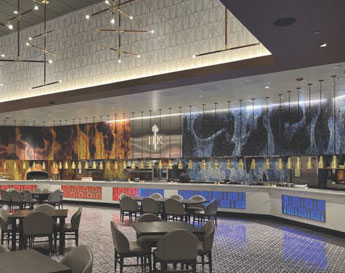
Hell’s Kitchen by Cuningham Group at Harrah’s Resort Southern California
Third-party restaurants with noted chefs constitute another profitable F&B outlet these days, Ewing adds, citing a facility Cuningham completed for the Rincon tribe at Harrah’s Resort Southern California. “They had a big, old buffet, and when Covid hit, they closed it down,” Ewing says. “It was about 15,000 square feet. That space sat there for a couple of years, and then they made a deal with Gordon Ramsay to bring Hell’s Kitchen in. So we took about 11,000 square feet.
“We didn’t even use the whole footprint of the buffet and created the biggest Hell’s Kitchen in the U.S. That opened last fall, and it’s been very successful.”
“Experiential dining has notably gained significant traction at casino resorts, transcending geographical boundaries,” notes Emily Marshall, principal and interior design director for HBG Design. “New experiential and immersive F&B designs creatively unfold for the guest. The spaces are shaped through meticulous detail. Every design selection is thoughtfully curated and resonates purposefully, creating a harmonious environment that engages the senses.
“The experiences I have most enjoyed have been uniquely crafted rooftop patio restaurants adorned with abundant outdoor greenery to seamlessly blur the boundaries between indoor and outdoor spaces.”
That’s Entertainment
Food-and-beverage additions complement another high-ROI non-gaming element these days on the entertainment side. However, few tribal resorts are making money from huge Las Vegas-style theater venues, or the superstars who establish residencies bringing in the non-gaming profits year-round.
What’s more prevalent in Indian Country are smaller theaters that can be transformed into other uses—notably, meetings and conventions—to bring in revenue midweek, with smaller acts and regional attractions filling the venues on weekends.
Nejelski at TBE says these multi-use facilities give smaller casinos a versatile profit center that operates throughout the week. “It may not make sense to invest in a high-end theater experience if you’re not going to be able to get the size acts and have enough of the shows,” he says.
“We just did a renovation of a Sprung structure at Coushatta Casino. It’s still a Sprung structure, but we updated the finishes and set it up to where they run concerts, and they run concerts there quite frequently. And they’re very popular. You’re not getting the gigantic headliners, but we went down there for a Jefferson Starship show—it was packed, and it’s right off of the gaming floor.”
During the week, he adds, the structure makes money in a variety of ways—the casino rents it out for weddings, parties, even meeting space. “We don’t like doing anything that creates dark spaces,” Nejelski says. “So if it’s just a one-use venue, that’s really going to impact its ROI. If that venue can be either scaled down and used for a different purpose or have secondary uses that it can accommodate, you have more of an opportunity to be generating revenue out of that secondary amenity.”
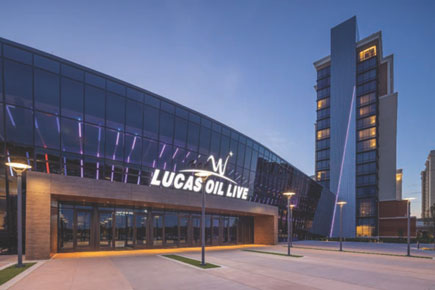
Lucas Oil Live facility at WinStar World Casino & Resort in Oklahoma
Of course, that doesn’t mean casinos aren’t still adding the huge entertainment venues, particularly in the larger markets. One of HBG’s signature projects is the Lucas Oil Live facility at WinStar World Casino & Resort in Oklahoma, which serves the huge Dallas/Fort Worth market across the border in Texas. It is a 6,500-seat venue offering optimal acoustics and aesthetics.
“It sets a new standard for live entertainment in the region, attracting performers the caliber of Miranda Lambert, Rod Stewart, and Tyler Childers,” says Peak. “VIP event lounge suites provide comfortable living room-type seating and mingling space. The dynamic LED-lit concourse mirrors the rhythmic flow of music. The exterior’s angled glass offers an unobstructed view of the thematic soundwave motif. Every element enhances the attraction and energy of the performances and events held within.”
The venue is adjacent to the new Session House Gastropub, which connects Lucas Oil Live to its new 16-story, 304-key contemporary Spa Tower hotel.
Family Fun
One new trend in casino design is to take the entertainment to the entire family, as a variety of family fun centers and arcades join ever-more-elaborate swimming pool facilities and other attractions open to all ages.
“Now that a lot of the properties have matured, a lot of the tribal communities are asking for family amenities, especially arcades,” says Ewing at Cuningham. “And, they’re even looking at water parks and outdoor elements, so they can bring their family to the properties as they mature.”
Ruiz from R2Architects notes that there are even non-gaming arcades for adults. “In some markets, we’re seeing these adult arcades, these adult chip-and-putt type of indoor venues,” he says. “And we’re also seeing now, with some of these larger gaming properties, venues where it’s adult-centric—billiards, air hockey, in a different context, with food and loud music with a high-energy vibe to it.”
Of course, the time-honored family activity at casino resorts is swimming, and many of the highest-profile non-gaming additions lately have involved pools.
“Pools are very popular and create a great marketing draw,” says Heretakis at Westar. “But you can’t just build a pool. Your operations team constantly needs to program events to keep it fresh and vibrant and a great draw. A large area for concerts is great; entertainment can be a big draw.”
HBG’s expansion at WinStar includes the five-acre Cascades pool entertainment complex. “WinStar has embraced the Dallas/North Texas market, which is only about a 90-minute drive to the resort,” says Peak. “These new non-gaming amenities are attracting the ‘daycation getaway’ guest seeking elevated entertainment options in the region.”
At the Gun Lake Casino south of Grand Rapids, Michigan, HBG is working on the six-story, 32,000-square-foot Wawye Oasis multi-purpose pool and event center atrium complex, next to a hotel addition, to open next year. “At its core, the Wawye Oasis is a visionary concept encompassing a glass-roofed, climate-controlled indoor landscaped environment shaped like a large sun dial to optimize sun exposure while shielding against the weather elements,” Peak explains. “In a region renowned for its cold and windy winters, this atrium will maintain a cozy 82-degree climate year-round, complete with preserved tropical flora and terraced lawns. From an immersive pool environment to a versatile concert venue, the event possibilities within this unique multi-purpose space are truly limitless as it transitions from an active resort pool oasis by day to a dynamic performance complex by night.”
Hotel Within a Hotel
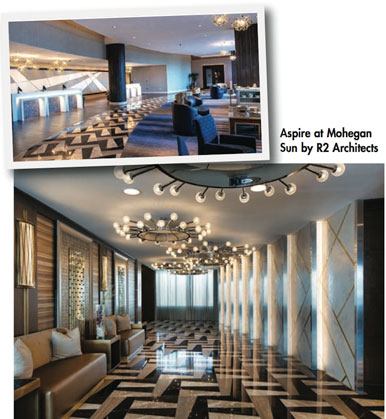 Those multi-purpose entertainment and recreation facilities go hand in hand with the newest hotel additions, and some projects repurpose old or unused hospitality space into something completely new. One example is the new Aspire “hotel within a hotel” at Mohegan Sun in Connecticut.
Those multi-purpose entertainment and recreation facilities go hand in hand with the newest hotel additions, and some projects repurpose old or unused hospitality space into something completely new. One example is the new Aspire “hotel within a hotel” at Mohegan Sun in Connecticut.
It is part of a $62 million renovation of 1,150 guest rooms and suites for which Mohegan enlisted R2Architects. “What makes this project really stand out is that while we were designing and documenting, and they were already starting to do the renovations in this tower—the Sky Tower is very tall, 36 stories—Massachusetts had a couple casinos coming online,” says Ruiz.
“So the leadership at Mohegan knew that this was going to potentially shift some tectonic plates. And they didn’t take it sitting down; they were very proactive.” The result was Aspire, the luxury hotel within the overall Mohegan resort complex. R2Architects transformed a 5,000-square-foot former bus terminal into an exclusive check-in area for Aspire.
“We created a new vehicular car canopy at the bottom of the Sky Tower, around the corner from the main hotel front desk canopy,” Ruiz says. “We created a really special front desk for folks that are staying for the Aspire experience.”
That is billed as a premium hotel experience, centered on the upper floors—including the reimagined Sky Club, a beautiful lounge on the 33rd floor. “If you have the credentials,” says Ruiz, “you get to hang out there, have snacks, have drinks. But we also brought table games into the lounge, so there’s a really high-end, unique intimate experience that goes on up there.”
Don’t Forget the Parking
Historically, one of the highest returns on non-gaming investment in the casino business has been the parking facility. “Parking structures are huge,” says Nejelski at TBE Architects. “It’s all about guest convenience. If you’re living in a climate that gets a lot of snow, a lot of rain or a lot of sun, a parking structure allows you to get under cover. It also shortens the distance between your parking space and a slot machine. So, they’re a pretty good return on investment.”
“Parking garages are important because they are directly tied to guest convenience,” says Peak at HBG. “Customer convenience amenities typically see significant return on investment. By minimizing handle-to-handle distances, owners can provide quick and easy access straight to the gaming floor. Parking garages are even more important in Northern climates, to protect guests from adverse weather conditions.”
Parking facilities are one more way casino resorts are using non-gaming elements to draw and keep customers. “Non-gaming amenities contribute to revenue, but their primary value lies in their ability to attract diverse guests and extend guest stay on property,” say HBG’s Peak. “Consider a guest attending a major music event. They are seeking a comprehensive entertainment experience from the moment they arrive. The emphasis is not solely on ticket sales but on providing guests with a multi-layered experience that generates revenue throughout the property.
“This makes it crucial that gaming and non-gaming amenities are properly planned and designed for convenience, open sight lines to revenue-generating venues… and for excitement.”
Designing Tribal
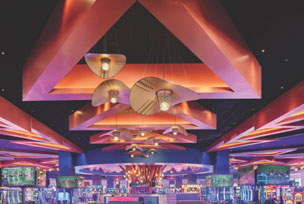
Eagle Mountain Casino by HBG Design
One important aspect of designing non-gaming amenities for tribal casinos is a sensitivity to tribal culture and heritage.
“Tribal culture, tradition and heritage is the essence that makes up the brand that is that specific tribe,” says Paul Heretakis, vice president of Westar Architectural Group. “It’s what differentiates them from a neighboring tribe. That could be said of all successful casinos. You want people to walk through the door and immediately get a strong feeling of who you are and what you are offering your customers to make them happy and enjoy their visit.”
“Within the overarching design narrative, cultural elements, often abstractly interpreted, serve as unique identifiers for the tribal community, and function as distinctive design features that set the gaming experience apart for customers,” says Nathan Peak, principal and practice leader for HBG Design.
Examples of this principle can be found in any number of tribal projects. Peak points out the new 105,000-square-foot Eagle Mountain Casino, operated by the Tule River Tribe in Porterville, California. “Soaring vertical features recall the majesty of the giant sequoia and the golden eagle, each important symbols of tribal culture,” he says. “Flowing forms recall the winding Tule River and organic curves of nature. A variety of tribal basket patterning and motifs highlight ceiling and floor planes and light fixtures, drawing guests through wayfinding paths to the 1,750-machine casino.”
“Ak-Chin was one of the most successful collaborations that we had on a project,” says David Nejelski, vice president, creative director and principal of TBE Architects. “They established an art design committee comprised of tribal members. Some of the tribal members that were on that committee are significant people in the council right now. And they worked with us on the concepting and the development of all of the elements that are in Ak-Chin from a tribal representation standpoint.”

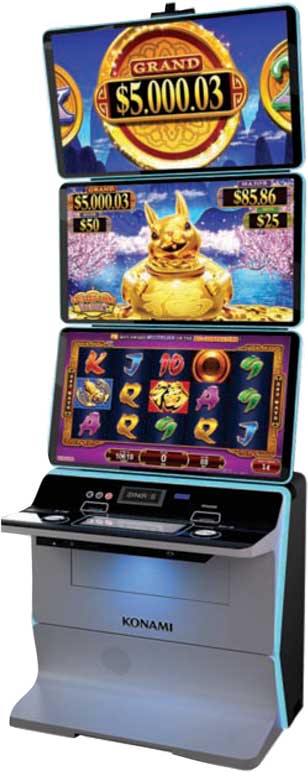 As creator of Synkros, the industry’s most reliable casino management system, Konami is delivering continued innovation to the casino space with its award-winning mobile tools, hugely in-demand SYNK 31 Anti-Money Laundering/ Title 31 product, a suite of web-based reporting tools and flexible Synkros Progressive Management floorwide progressive. Synkros is developed as a single, non-forking code base system, incorporating best-of-breed architecture from the financial and military industries, for an unmatched 99.9 percent ultra-high availability.
As creator of Synkros, the industry’s most reliable casino management system, Konami is delivering continued innovation to the casino space with its award-winning mobile tools, hugely in-demand SYNK 31 Anti-Money Laundering/ Title 31 product, a suite of web-based reporting tools and flexible Synkros Progressive Management floorwide progressive. Synkros is developed as a single, non-forking code base system, incorporating best-of-breed architecture from the financial and military industries, for an unmatched 99.9 percent ultra-high availability.


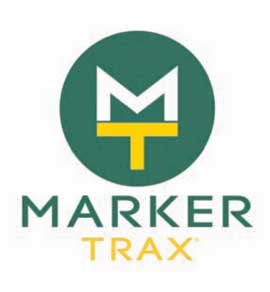

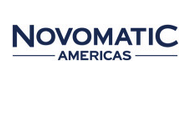
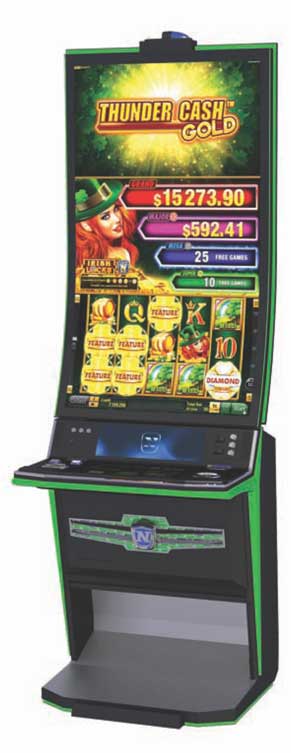 Leveraging the extensive resources and global expertise of its Austrian parent company, Novomatic Americas has spent years meticulously crafting a portfolio of offerings that resonate with the unique preferences and regulatory frameworks of North American and Caribbean jurisdictions. From state-of-the-art slot machines optimized for Class III and VLT/VGT markets to sophisticated electronic table games, sports betting kiosks and comprehensive management systems, the company’s product lineup is as diverse as it is innovative.
Leveraging the extensive resources and global expertise of its Austrian parent company, Novomatic Americas has spent years meticulously crafting a portfolio of offerings that resonate with the unique preferences and regulatory frameworks of North American and Caribbean jurisdictions. From state-of-the-art slot machines optimized for Class III and VLT/VGT markets to sophisticated electronic table games, sports betting kiosks and comprehensive management systems, the company’s product lineup is as diverse as it is innovative.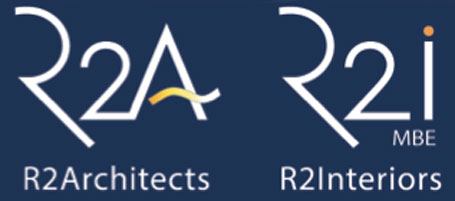
 R2A + R2I is an energetic and creative collaboration of multicultural individuals rich in design experience, producing signature projects for each client that complements their business plan while respecting their design aesthetic, schedule and budget. The DNA of the work is unique and specific to each client; they are the source of the design inspiration, no matter the scope or scale of the project. R2A + R2I innovates, creates and transforms clients’ visions into great designs.
R2A + R2I is an energetic and creative collaboration of multicultural individuals rich in design experience, producing signature projects for each client that complements their business plan while respecting their design aesthetic, schedule and budget. The DNA of the work is unique and specific to each client; they are the source of the design inspiration, no matter the scope or scale of the project. R2A + R2I innovates, creates and transforms clients’ visions into great designs.
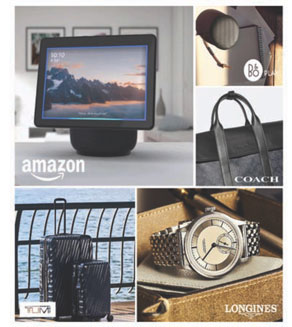 Rymax’s vast portfolio of brand partners and products offers hundreds of globally recognized brands, including Amazon, Apple, Big Green Egg, Bowflex, Callaway, Cuisinart, Calpak, Dyson, Gucci, Havaianas, Kate Spade, Kurt Geiger, Longines, Maui Jim, MCM, Michael Kors, Mont Blanc, OME Gear, Peepers, Rifle Paper, shortyLOVE, Solo Stove, Therabody, Tissot, Tumi, UGG, Victorinox, Viking and more.
Rymax’s vast portfolio of brand partners and products offers hundreds of globally recognized brands, including Amazon, Apple, Big Green Egg, Bowflex, Callaway, Cuisinart, Calpak, Dyson, Gucci, Havaianas, Kate Spade, Kurt Geiger, Longines, Maui Jim, MCM, Michael Kors, Mont Blanc, OME Gear, Peepers, Rifle Paper, shortyLOVE, Solo Stove, Therabody, Tissot, Tumi, UGG, Victorinox, Viking and more.
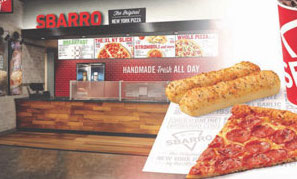 When selecting restaurant options to add to a venue, choose the brand known and loved by casinos and their guests. A key driver of success for the Sbarro brand within the gaming industry is its instant brand recognition. Sbarro is an internationally celebrated brand with more than 60 years serving slices in more than 700 restaurants in 30 countries. Seeing a familiar brand creates an instant connection with casino guests and drives that impulse purchase occasion.
When selecting restaurant options to add to a venue, choose the brand known and loved by casinos and their guests. A key driver of success for the Sbarro brand within the gaming industry is its instant brand recognition. Sbarro is an internationally celebrated brand with more than 60 years serving slices in more than 700 restaurants in 30 countries. Seeing a familiar brand creates an instant connection with casino guests and drives that impulse purchase occasion.
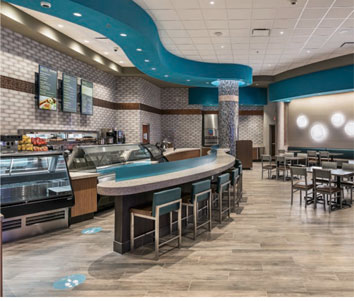 As a tribally founded firm, TBE has partnered with 123 tribes and First Nations on a variety of new build, expansion and property refresh projects.
As a tribally founded firm, TBE has partnered with 123 tribes and First Nations on a variety of new build, expansion and property refresh projects.




 Those multi-purpose entertainment and recreation facilities go hand in hand with the newest hotel additions, and some projects repurpose old or unused hospitality space into something completely new. One example is the new Aspire “hotel within a hotel” at Mohegan Sun in Connecticut.
Those multi-purpose entertainment and recreation facilities go hand in hand with the newest hotel additions, and some projects repurpose old or unused hospitality space into something completely new. One example is the new Aspire “hotel within a hotel” at Mohegan Sun in Connecticut.
